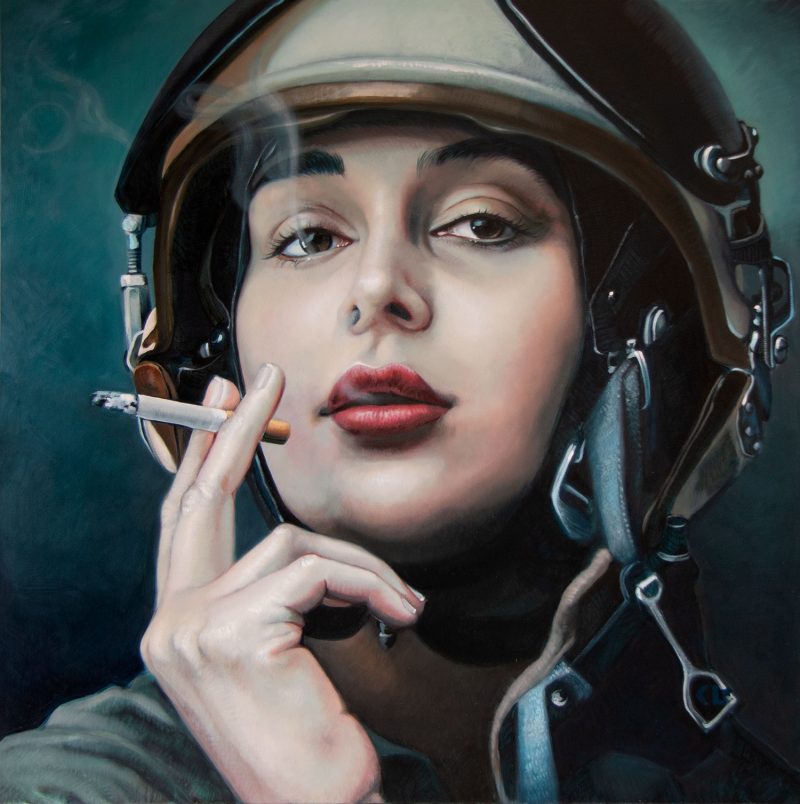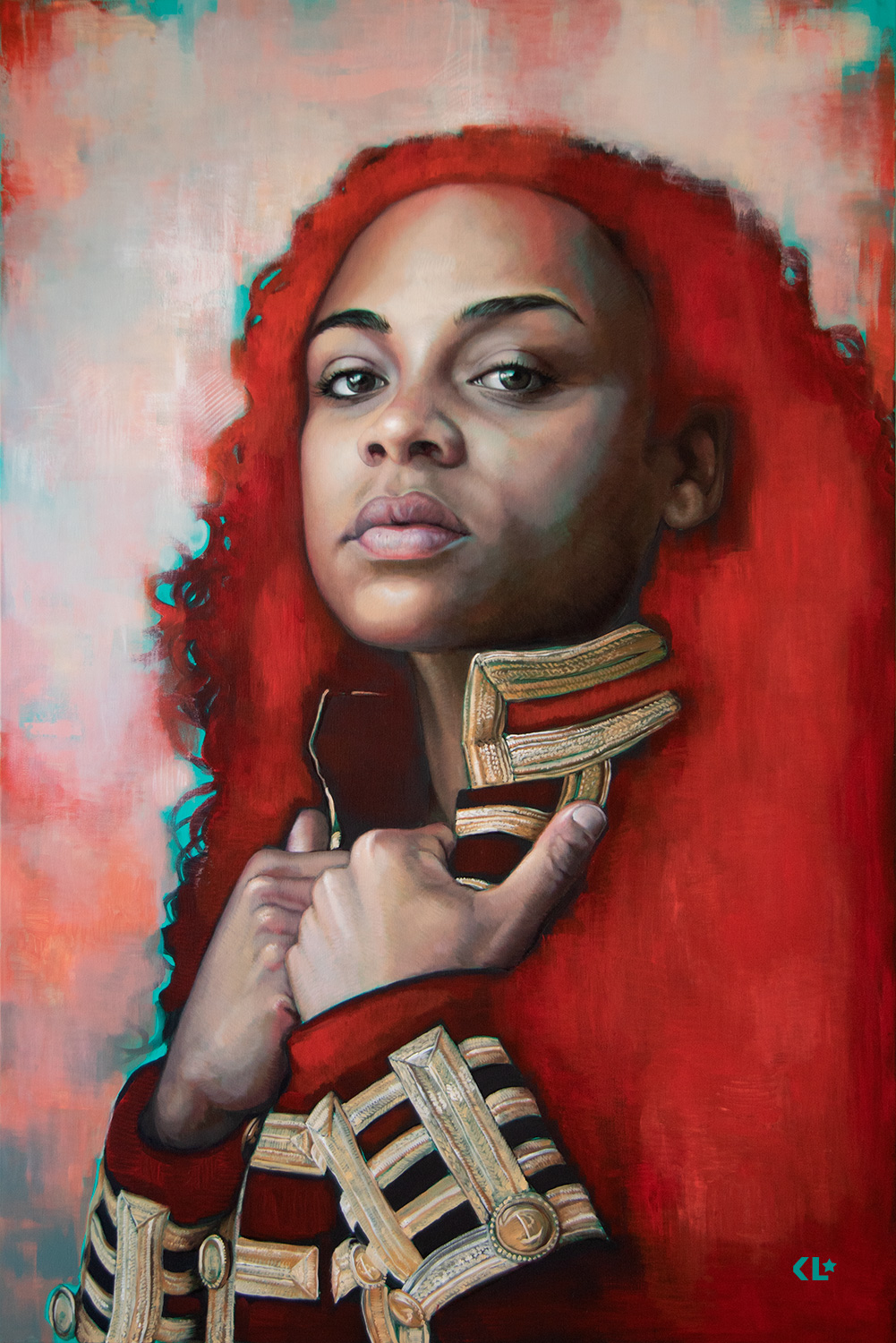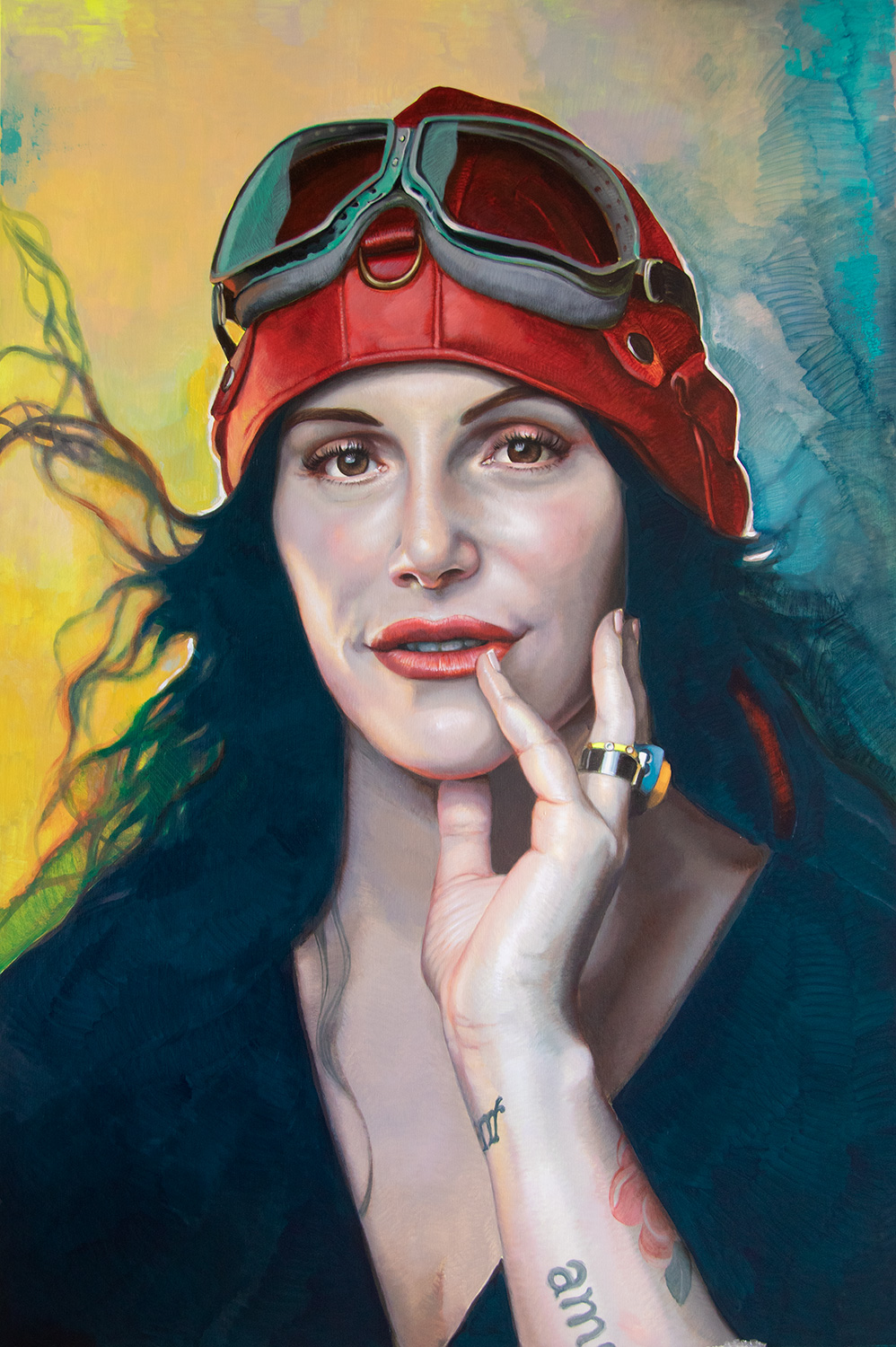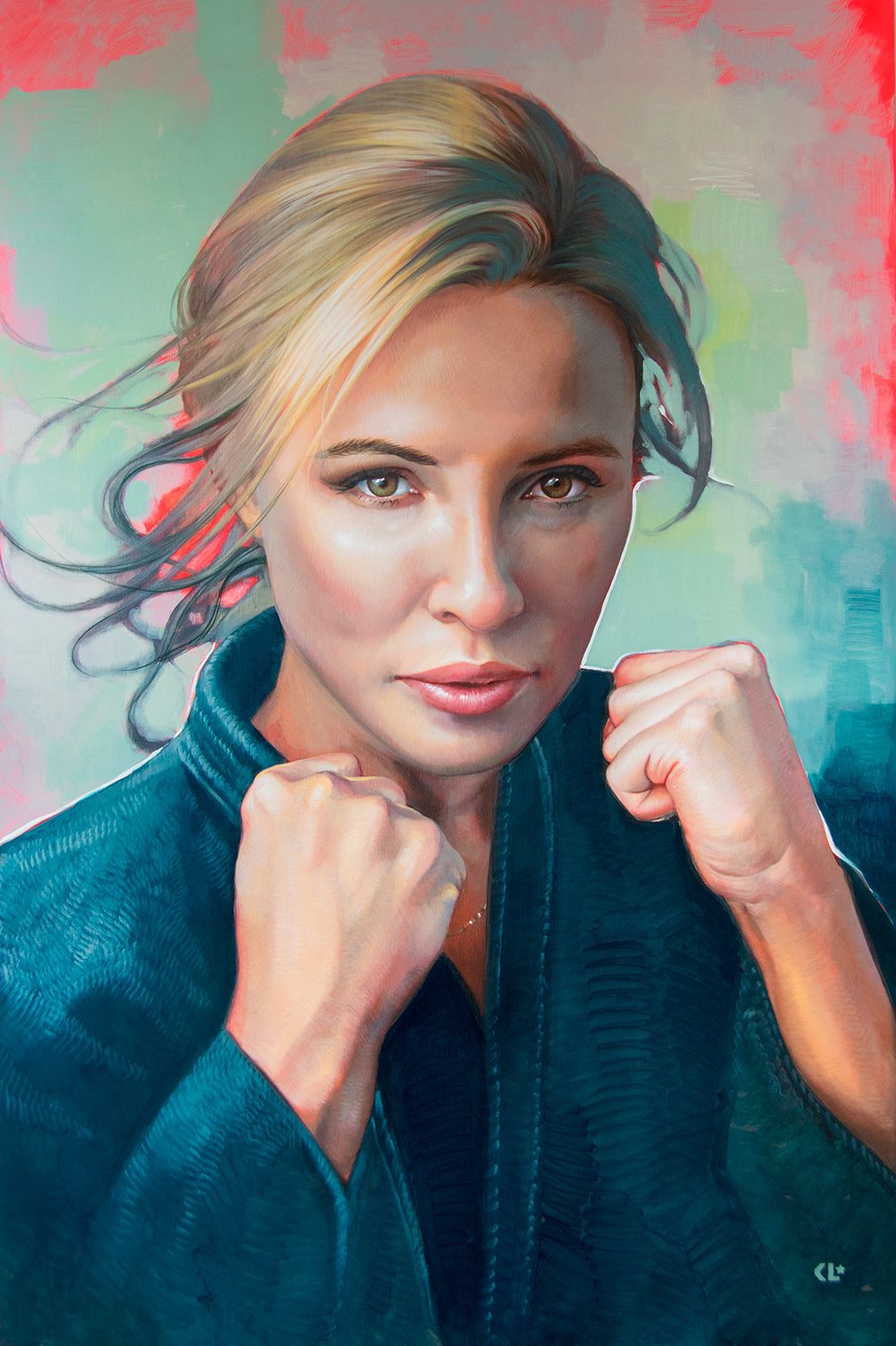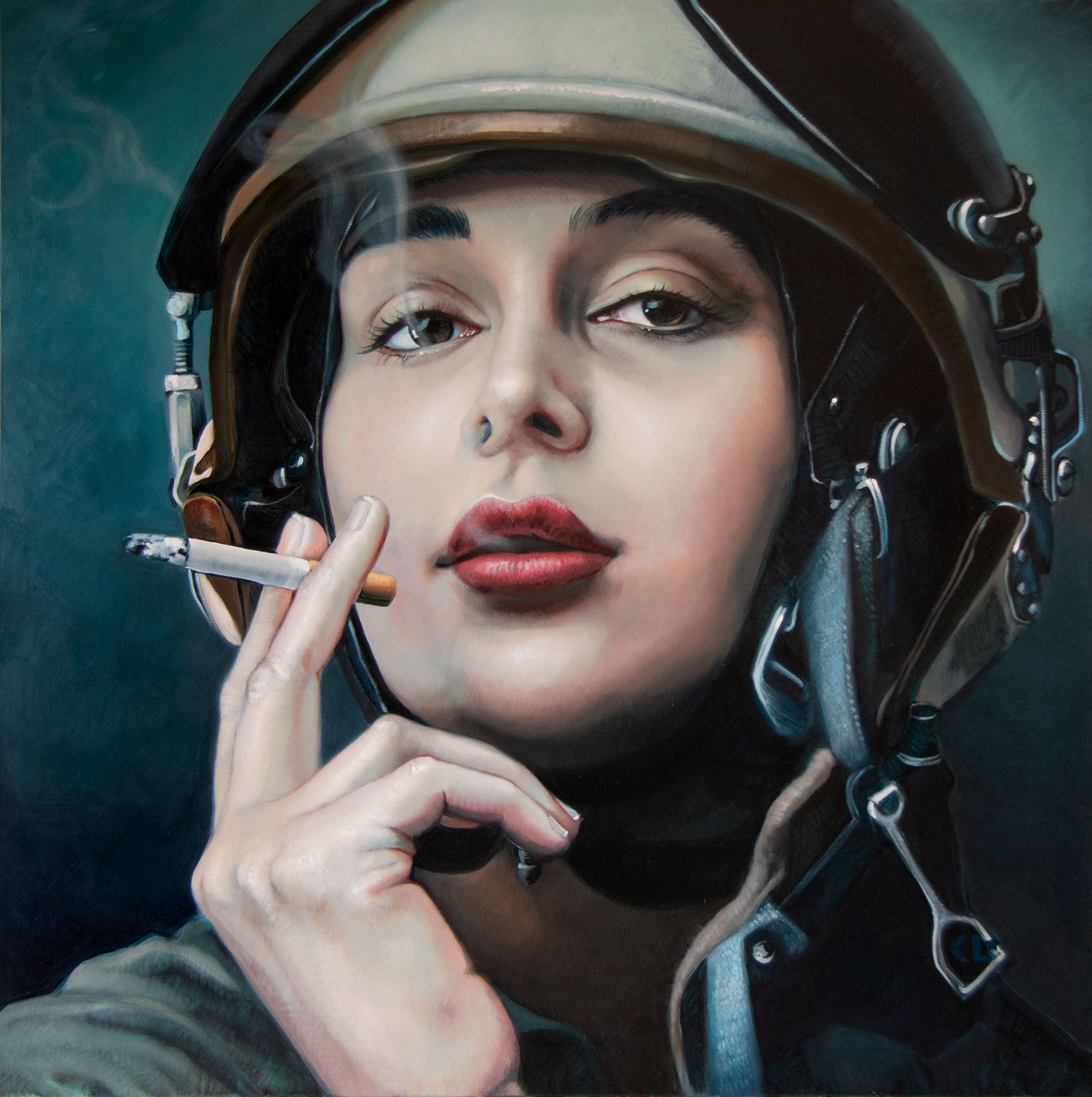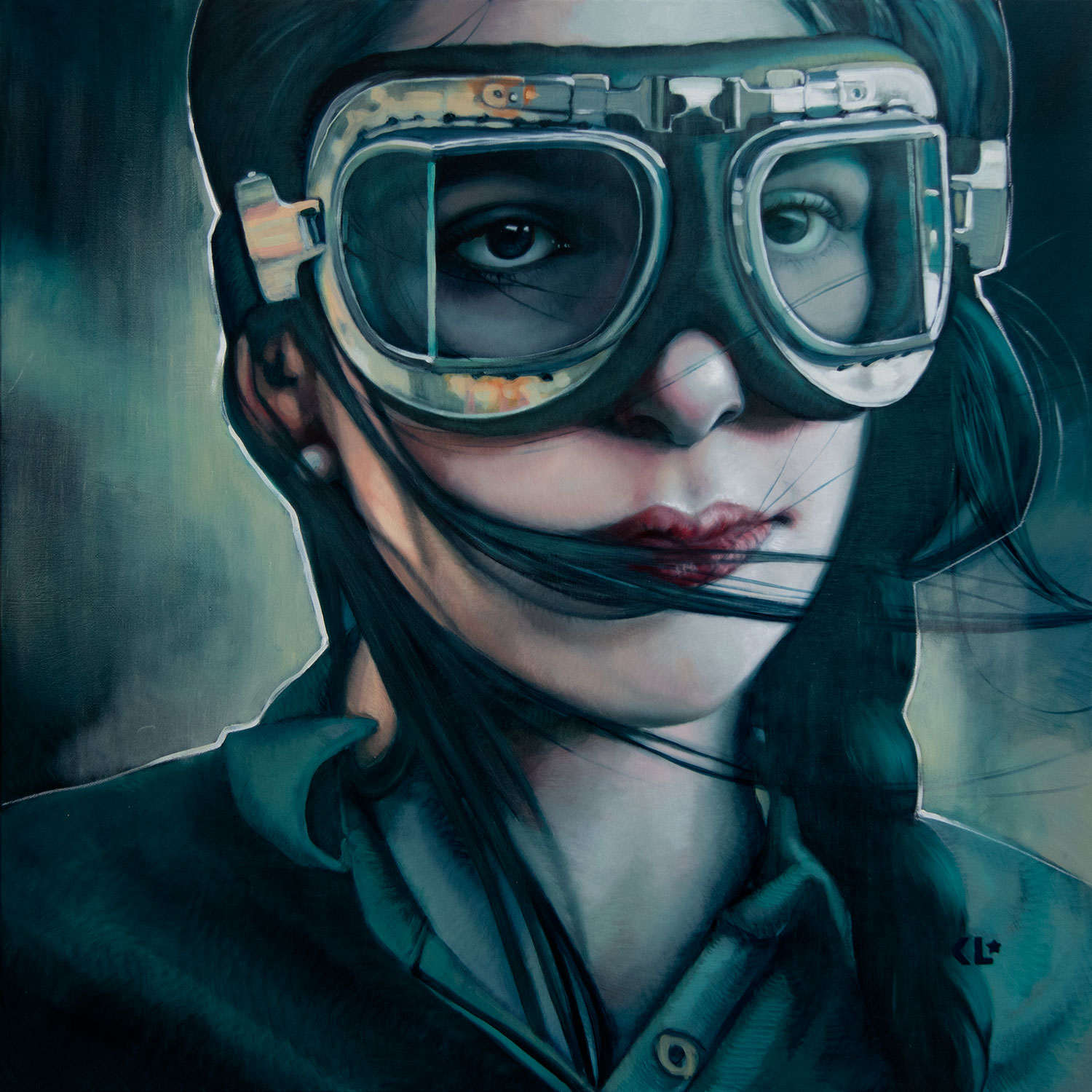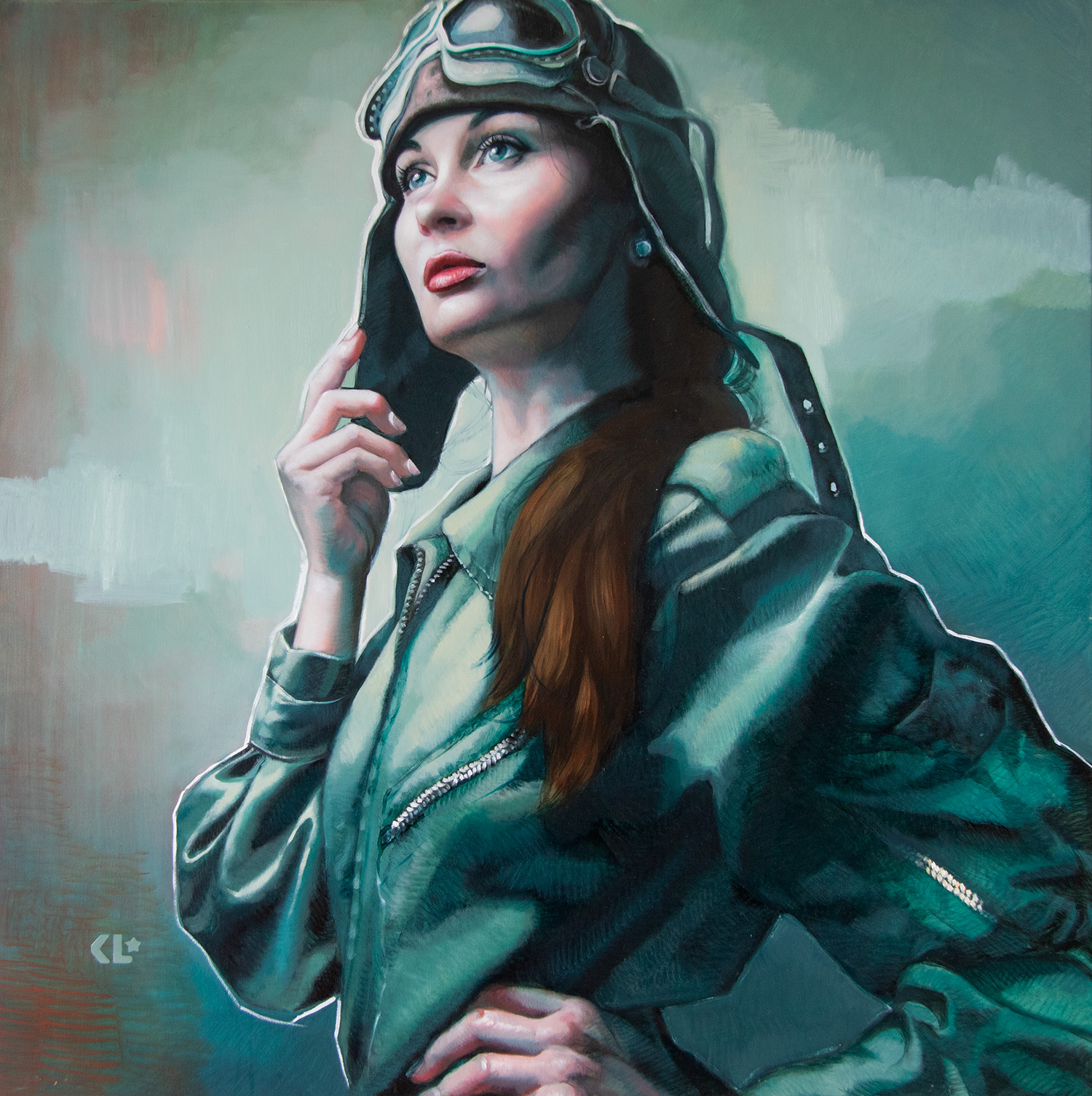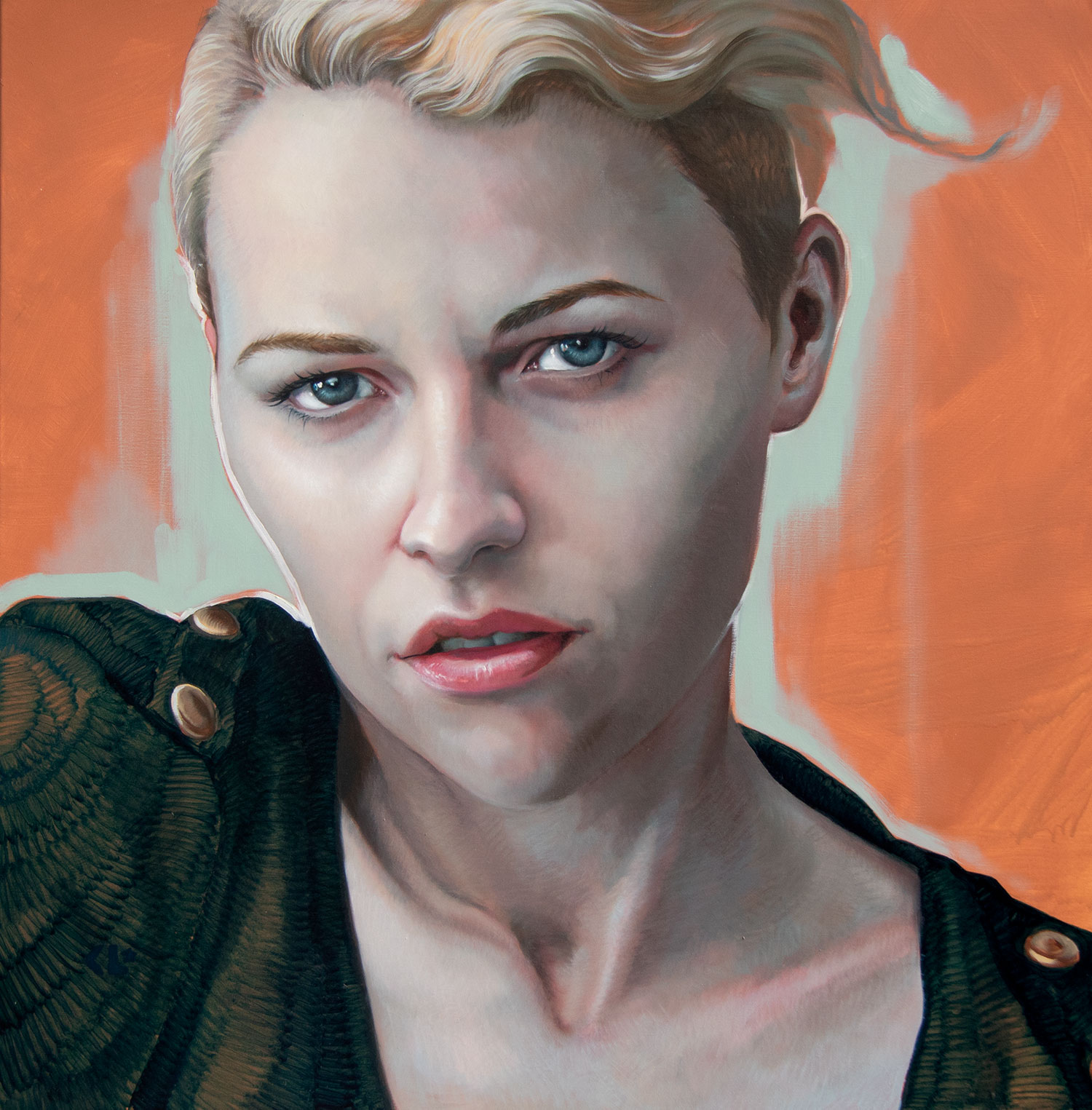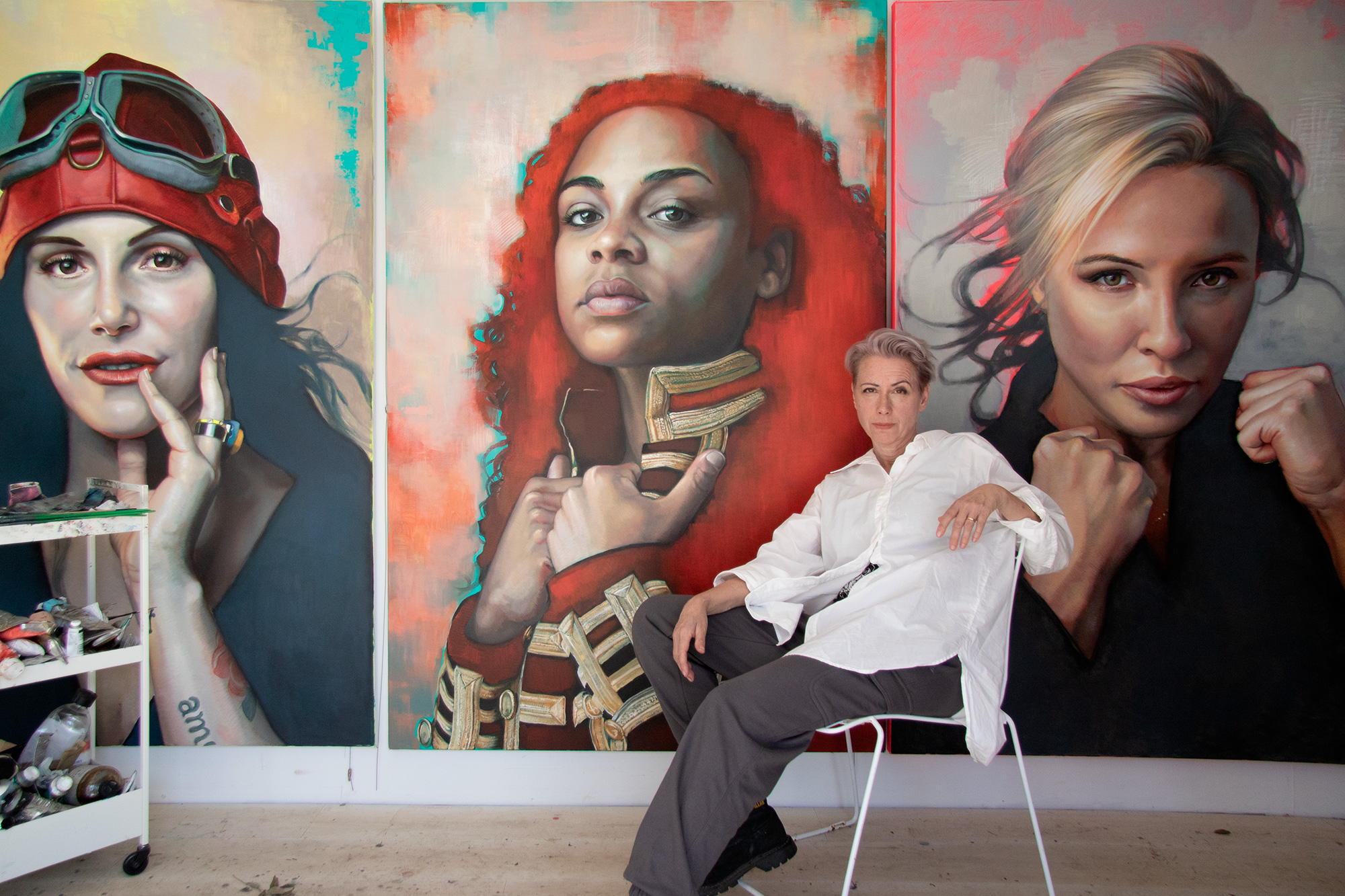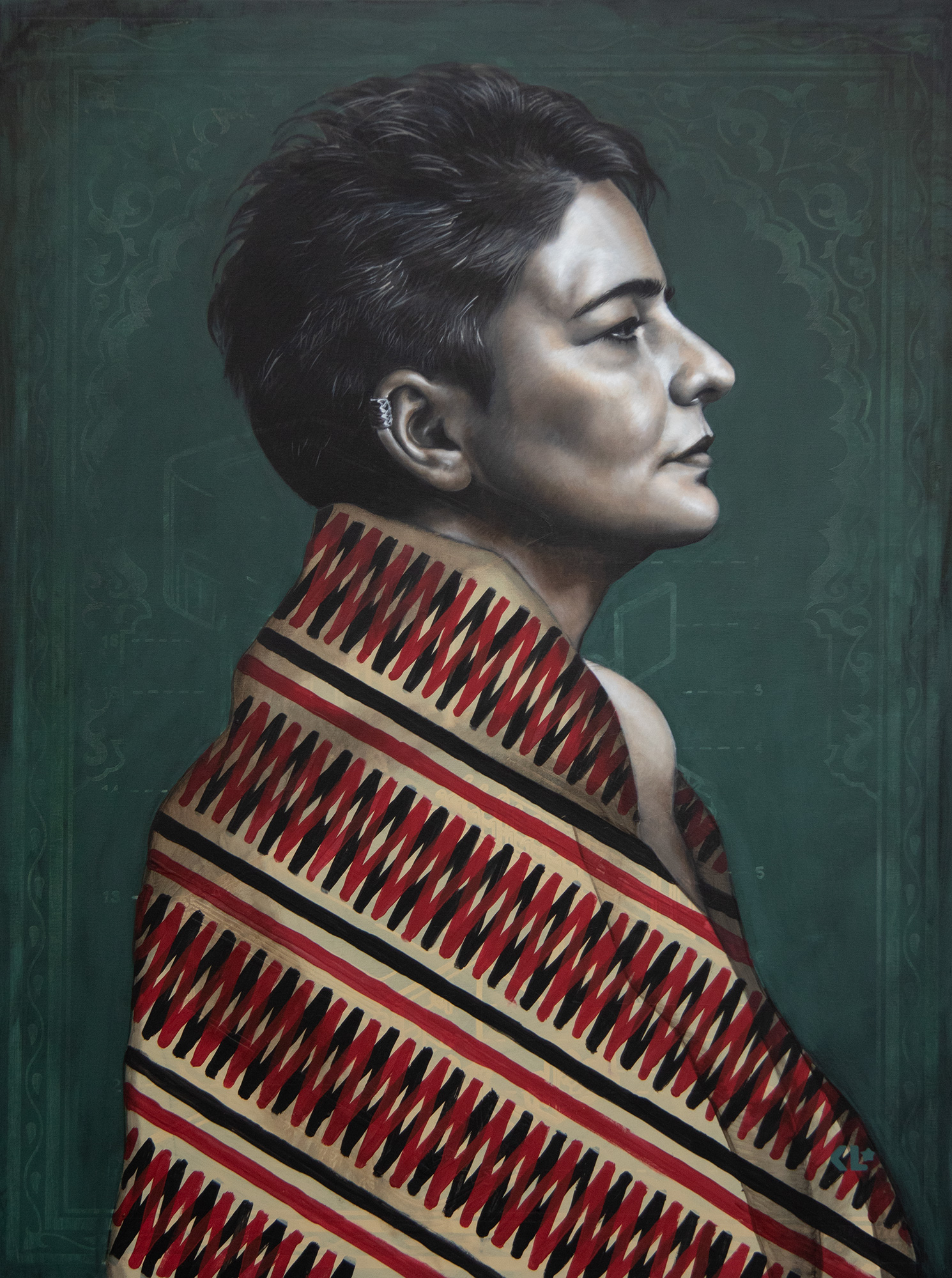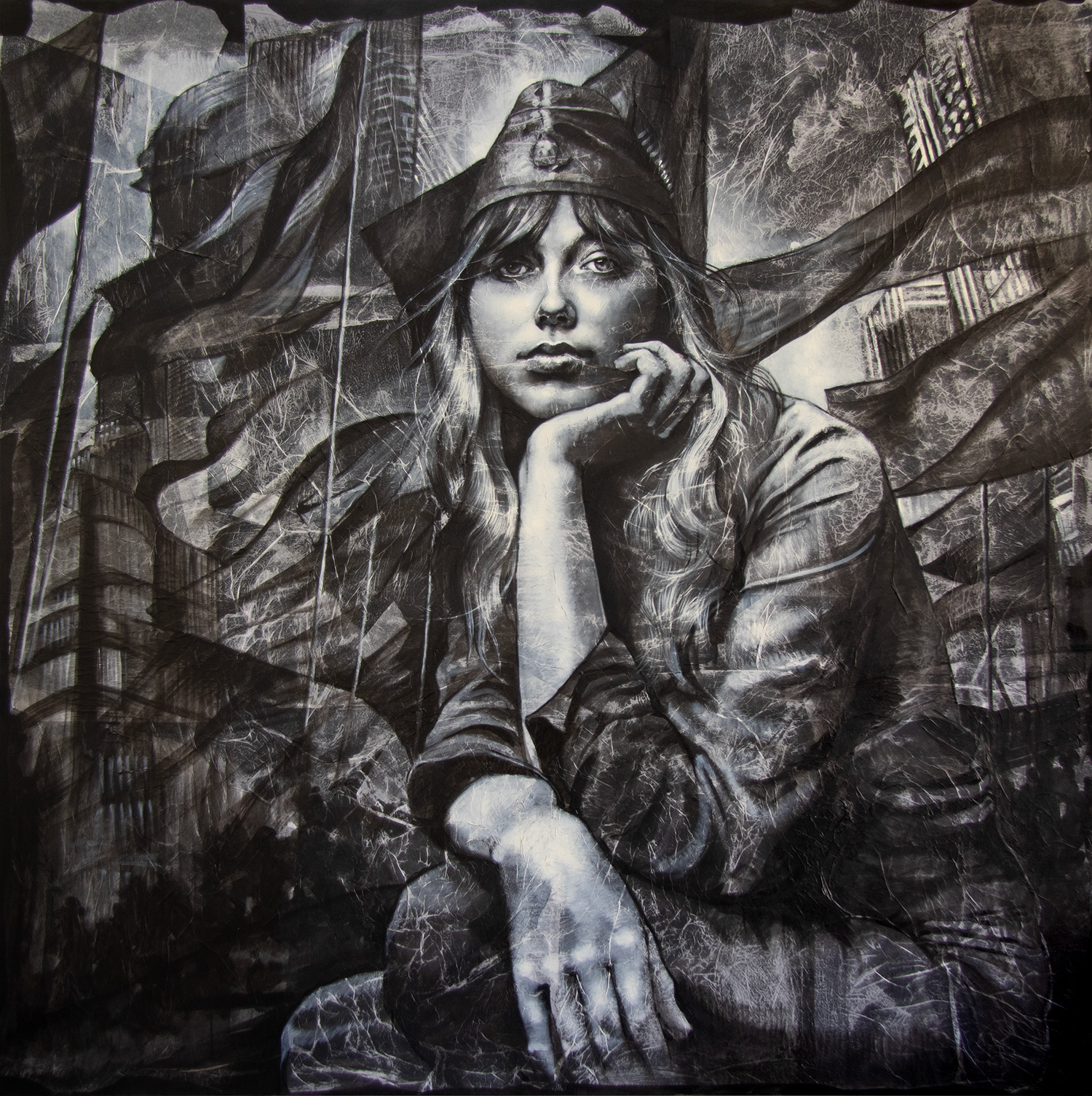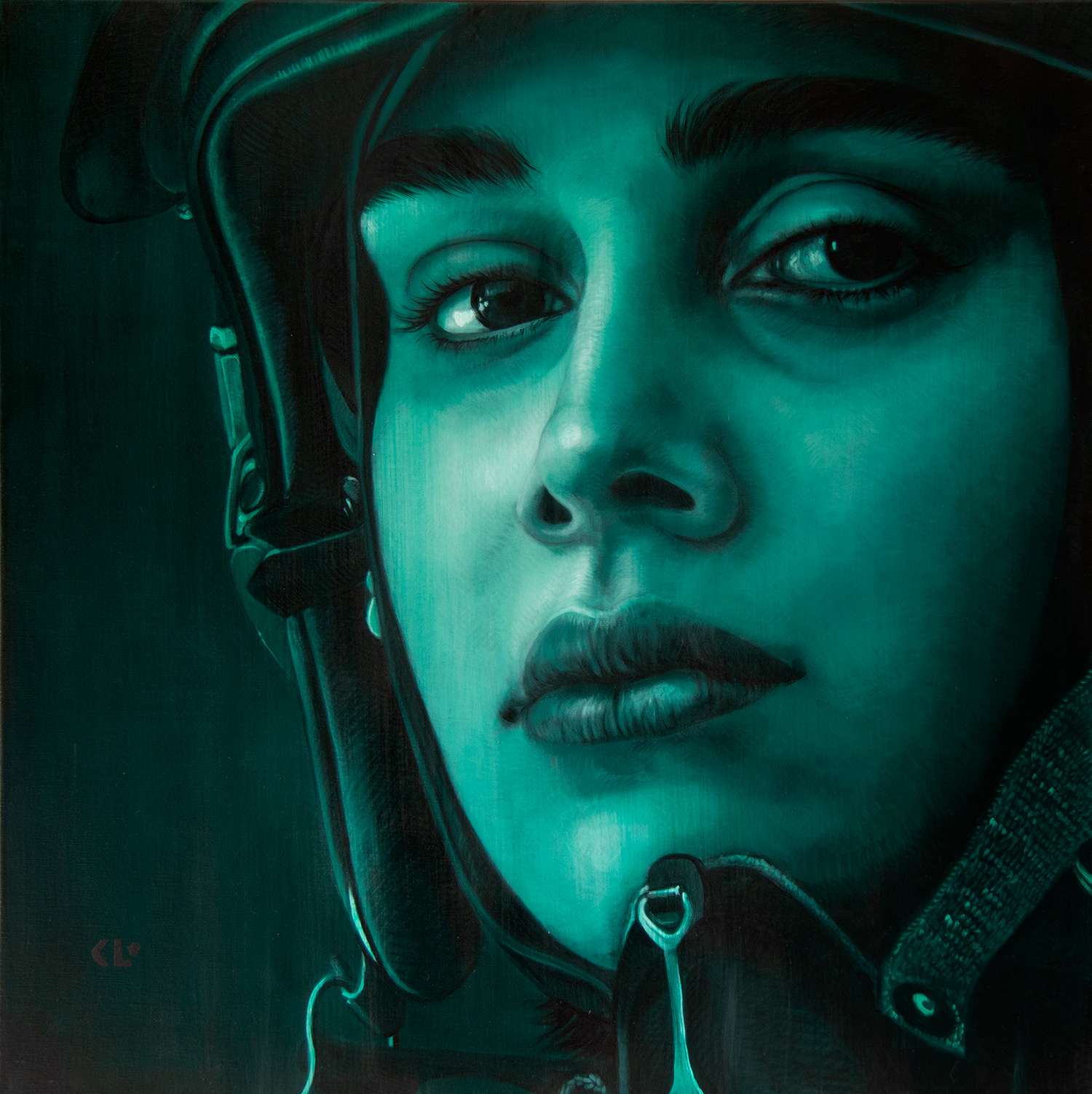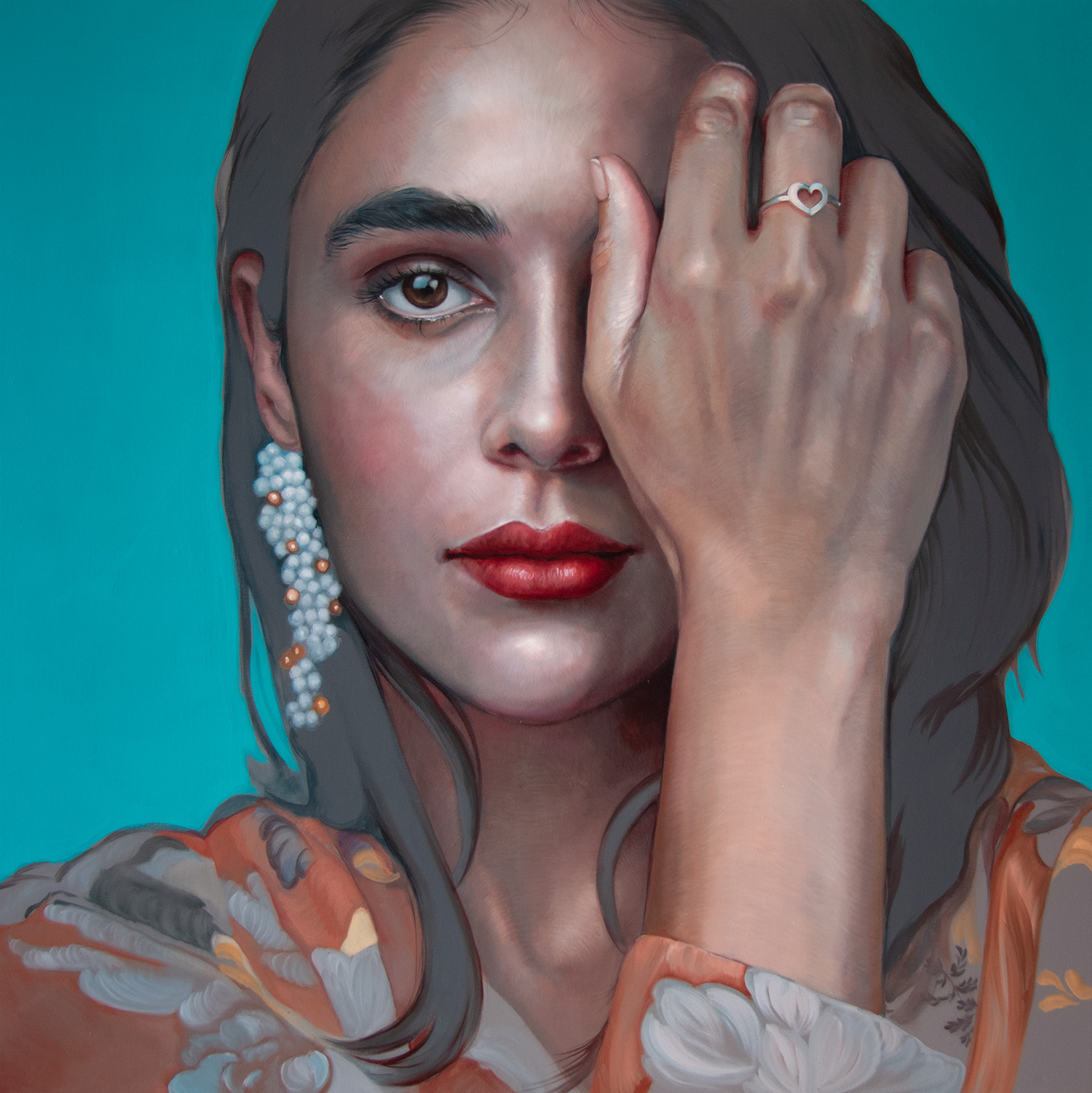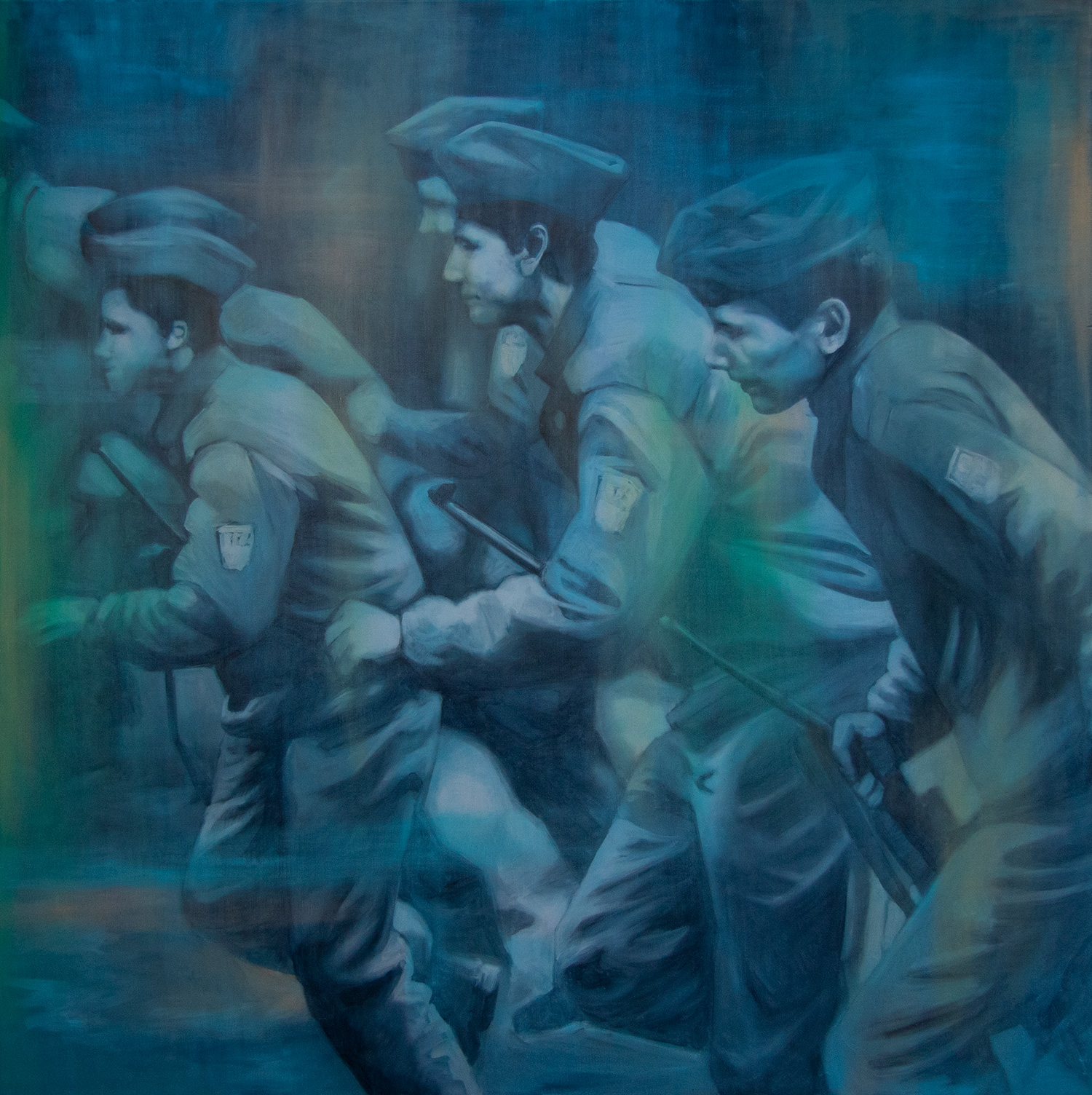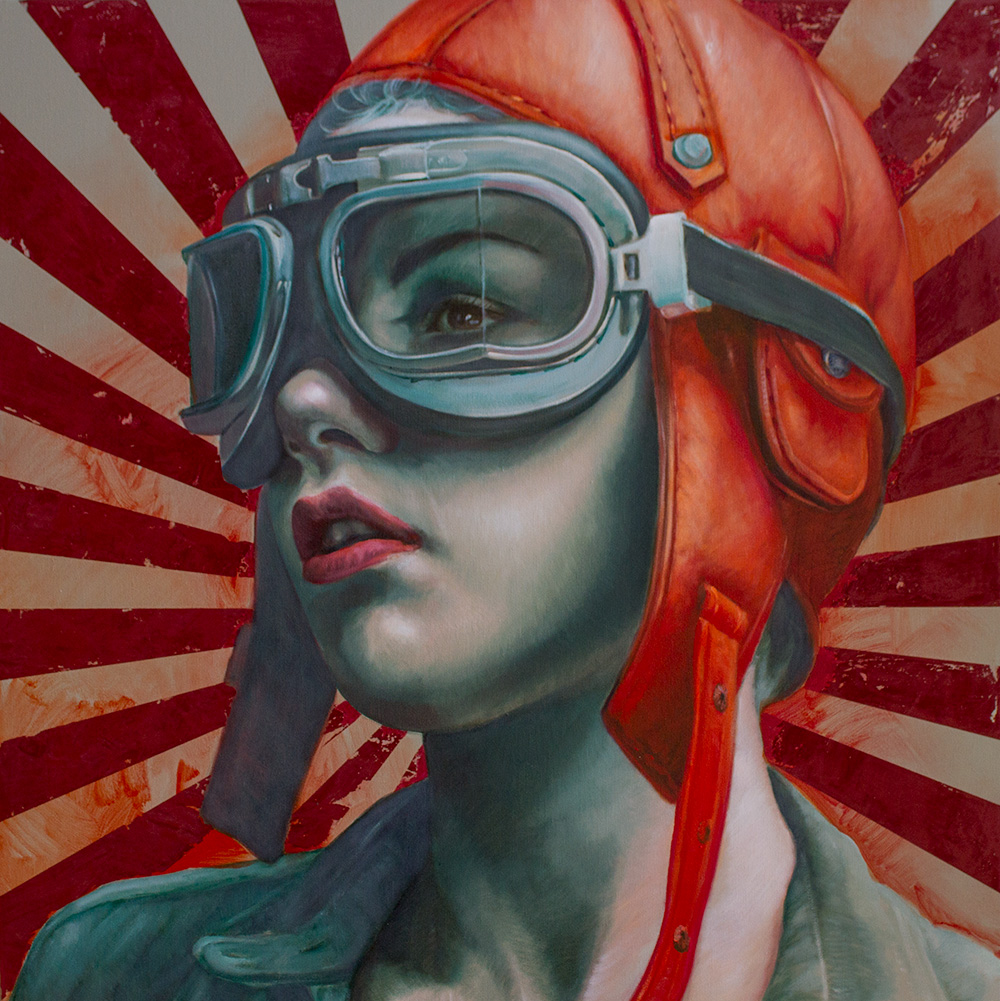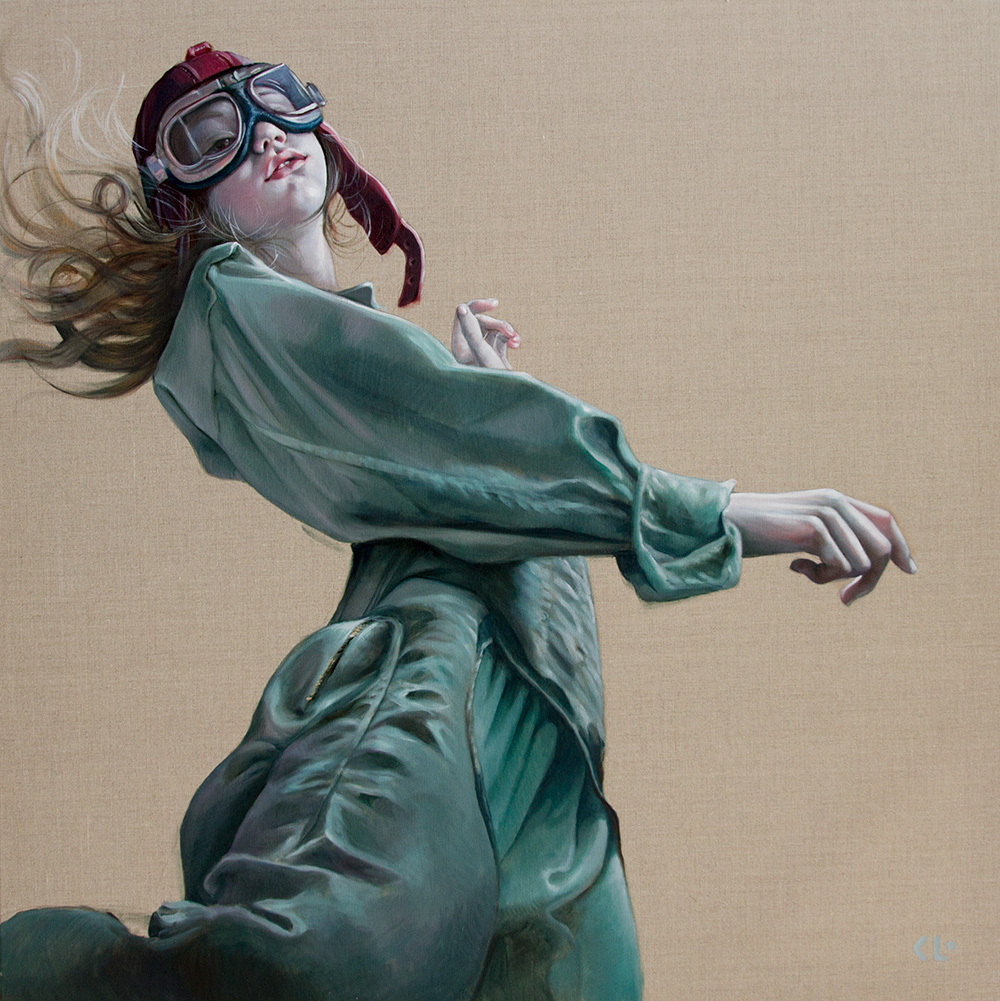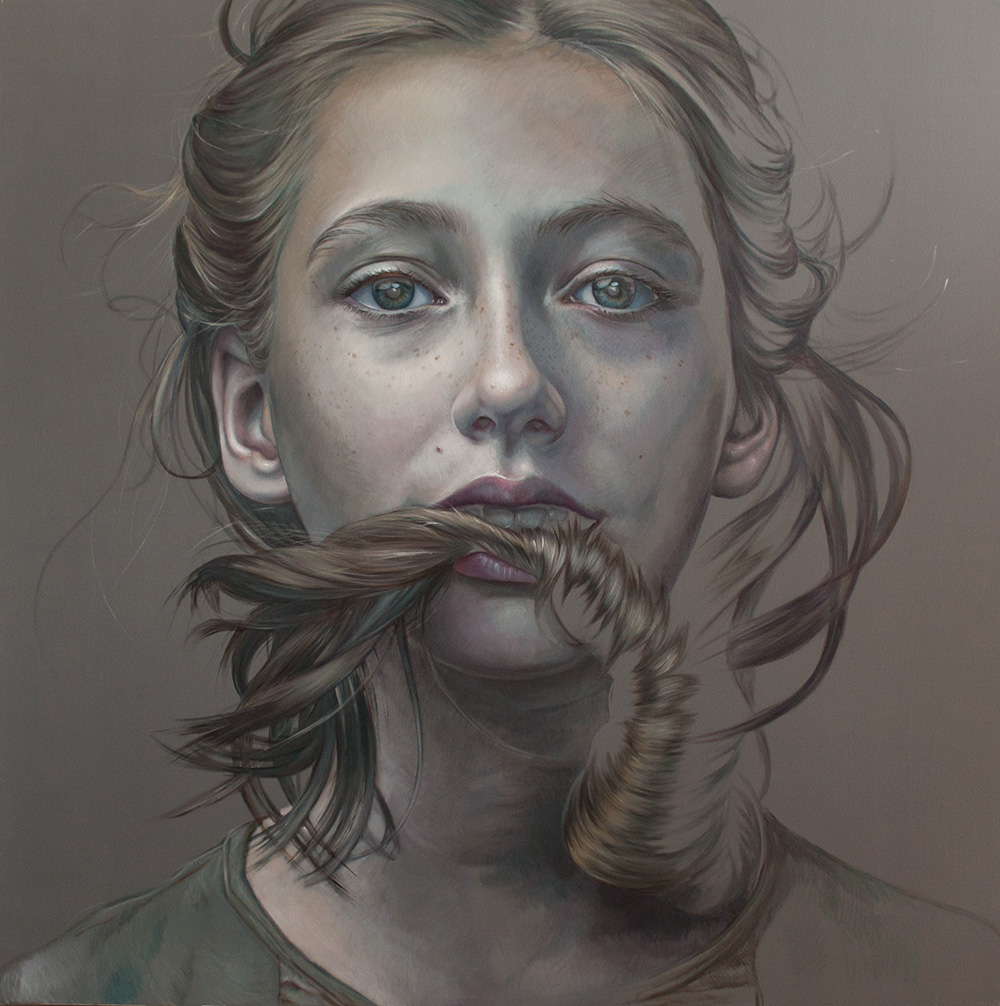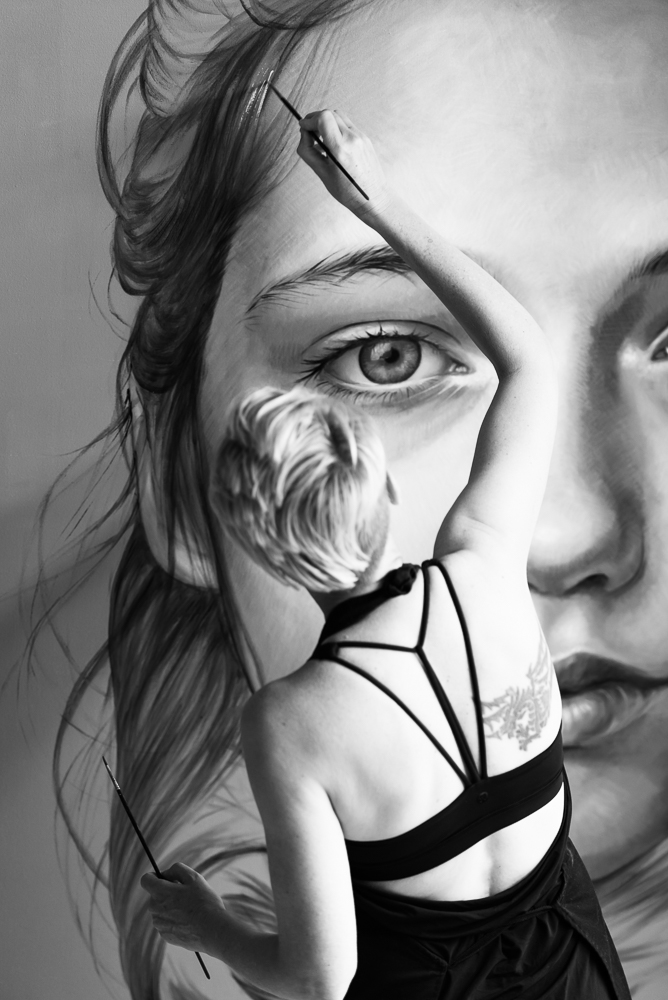Catalogue essay by Kate McAuley
“Women to the Front” March 2024
With her latest exhibition for Flinders Lane Gallery, the artist Kathrin Longhurst has once again produced a collection of works layered in depth and meaning, while continuing to champion the feminist cause to great impact and effect.
The title, Women to the Front, on its own right, brings to mind the hackneyed idiom, ‘Behind every great man is a woman’. Although, the exact origin of the phrase is unknown, its meaning is not. While acknowledging that a man is unlikely to achieve success on his own, the statement also reinforces traditional gender roles and societal expectations for women, including keeping house and raising children, all done behind the scenes, often without thanks or recognition.
During second wave feminism, which began in the 1960s, the phrase was adapted to ‘Behind every great man is an even greater a woman’ which, considered subversive at the time, began challenging these ideals, encouraging women to step out from behind their husbands, fathers and brothers, to claim their own space and voice.
In the intervening decades, much progress has been made, however, there is still much work to be done, to both achieve gender equality as well as hold onto the hard fought wins that have transpired since that time, including our rights to agency over our own bodies. For Longhurst, regression is not an option.
With this exhibition, the artist defiantly places her subjects on the frontlines of this battlefield. Featuring her signature large-scale canvases, deft skills with the brush, and a bold view of the feminine archetype as both nurturer and warrior, she weaves a common thread of resilience and survival.
Her models, all of whom she has built up a close relationship with over time and range in age from adolescence to women in their 50s, gift the artist with their experience of what it means to be a woman in this space and time. Through her art, she tells their stories, whether it be coming of age in our challenging world, the exploration of fluid sexuality, or learning to live with trauma born from sexual and domestic violence.
To achieve such a feat, Longhurst has endeavoured to remove herself from the narrative: to let her models ‘speak’ for themselves. With titles such as ‘The Defender’, ‘The Seeker’, and ‘The Warrior’, her subjects are depicted fully inhabiting these roles, while maintaining a powerful enigmatic detachment, paradoxically providing the viewer with both insight and room to ponder.
In 1985, Annie Lennox wrote a song combatting the aforementioned ‘great man’ idiom, belting out that it’s ‘no longer true’. ‘Sisters,’ she sang, ‘are doing it for themselves.’ And with Kathrin Longhurst, and this magnificent sisterhood on display here, the fight continues.
